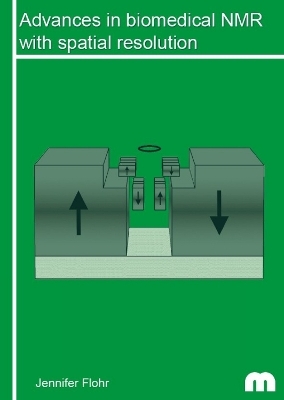
Advances in biomedical NMR with spatial resolution
Seiten
2019
Verlag Günter Mainz
978-3-95886-286-9 (ISBN)
Verlag Günter Mainz
978-3-95886-286-9 (ISBN)
In modern medicine, magnetic resonance imaging (MRI) is an essential diagnostic tool, which enables physicians to detect a great variety of diseases and physical injuries. The scope of possibilities encompasses neuro-, cardiovascular-, musculoskeletal-, hepatobiliary- and gastrointestinal imaging as well a magnetic resonance angiography. Besides commercially available MRI scanners, low magnetic field devices gain more and more attention because they are more compact, mostly portable, easier to handle due to the lack of cryogenic coolants, and usually come with a large cost saving.
In this thesis, high magnetic field devices and unilateral NMR sensors are deployed to explore different biomedical topics. Imaging techniques are used to study the flow inside aneurysms—enlargements of blood vessels in the human body, whose rupture can lead to severe health issues. In an experimental flow set-up, different fluids and flow velocities are
tested inside silicon aneurysm models with and without stents. These narrow tubes, which
commonly consist of a metallic network, are inserted into a vessel to cut the aneurysm from
the blood stream.
TheNMR-MOUSE
R (MObileUniversal Surface Explorer), a sensor design first conceived
in the mid 90s by Blümich and Blümler, and its derivative — the Fourier NMR-MOUSE —
are utilized to study human and porcine skin. Outer skin layers are investigated in terms
of diffusion and relaxation time profiling in laboratory and clinical studies. They assess the
structural composition and susceptibility to different substances, and identify carcinogenic
processes and the effect of aging and renal insufficiency
In this thesis, high magnetic field devices and unilateral NMR sensors are deployed to explore different biomedical topics. Imaging techniques are used to study the flow inside aneurysms—enlargements of blood vessels in the human body, whose rupture can lead to severe health issues. In an experimental flow set-up, different fluids and flow velocities are
tested inside silicon aneurysm models with and without stents. These narrow tubes, which
commonly consist of a metallic network, are inserted into a vessel to cut the aneurysm from
the blood stream.
TheNMR-MOUSE
R (MObileUniversal Surface Explorer), a sensor design first conceived
in the mid 90s by Blümich and Blümler, and its derivative — the Fourier NMR-MOUSE —
are utilized to study human and porcine skin. Outer skin layers are investigated in terms
of diffusion and relaxation time profiling in laboratory and clinical studies. They assess the
structural composition and susceptibility to different substances, and identify carcinogenic
processes and the effect of aging and renal insufficiency
| Erscheinungsdatum | 25.05.2019 |
|---|---|
| Verlagsort | Aachen |
| Sprache | englisch |
| Maße | 148 x 210 mm |
| Gewicht | 235 g |
| Themenwelt | Naturwissenschaften ► Chemie ► Physikalische Chemie |
| Schlagworte | intra-aneurysmal flow • Nuclear Magnetic Resonance • pulse sequences • skin aging • thrombosis |
| ISBN-10 | 3-95886-286-1 / 3958862861 |
| ISBN-13 | 978-3-95886-286-9 / 9783958862869 |
| Zustand | Neuware |
| Haben Sie eine Frage zum Produkt? |
Mehr entdecken
aus dem Bereich
aus dem Bereich
Quantenmechanik | Spektroskopie | Statistische Thermodynamik
Buch | Softcover (2024)
De Gruyter (Verlag)
CHF 83,90
Set aus Lehrbuch und Arbeitsbuch
Buch | Hardcover (2022)
Wiley-VCH (Verlag)
CHF 149,95
Thermodynamik | Kinetik | Elektrochemie
Buch | Softcover (2024)
De Gruyter (Verlag)
CHF 83,90


